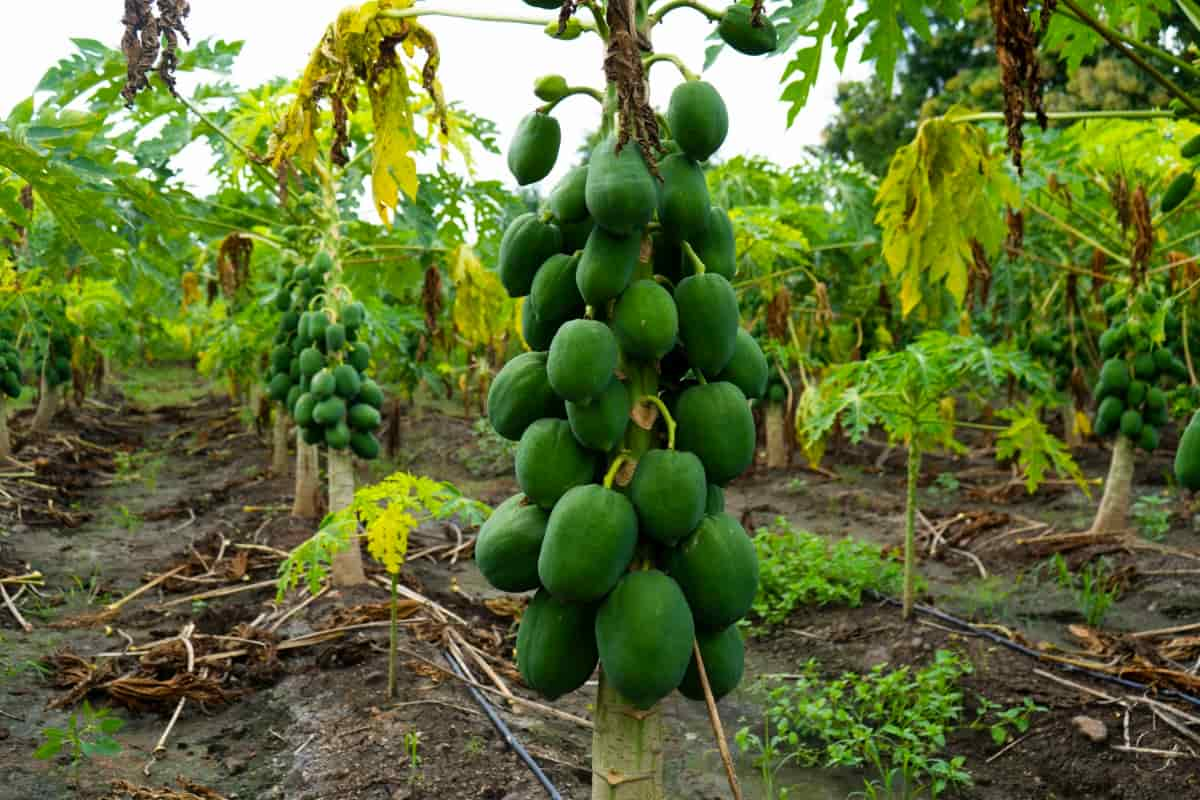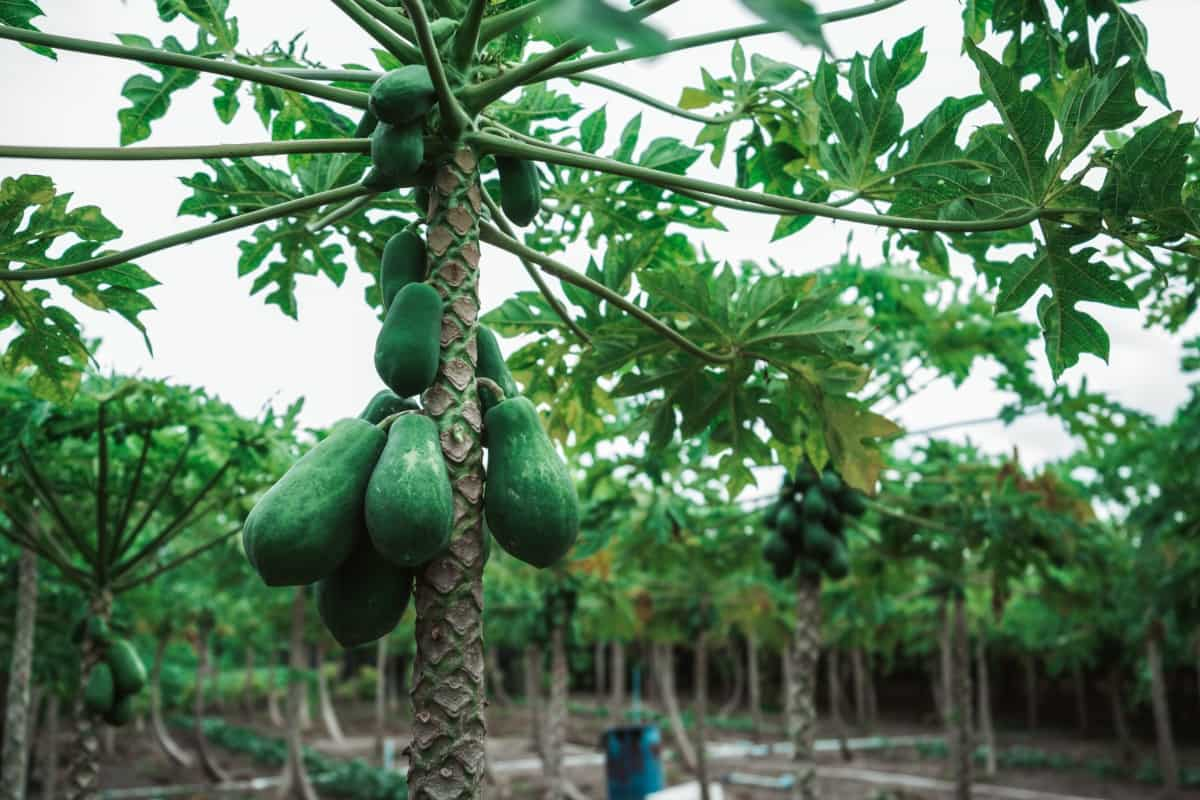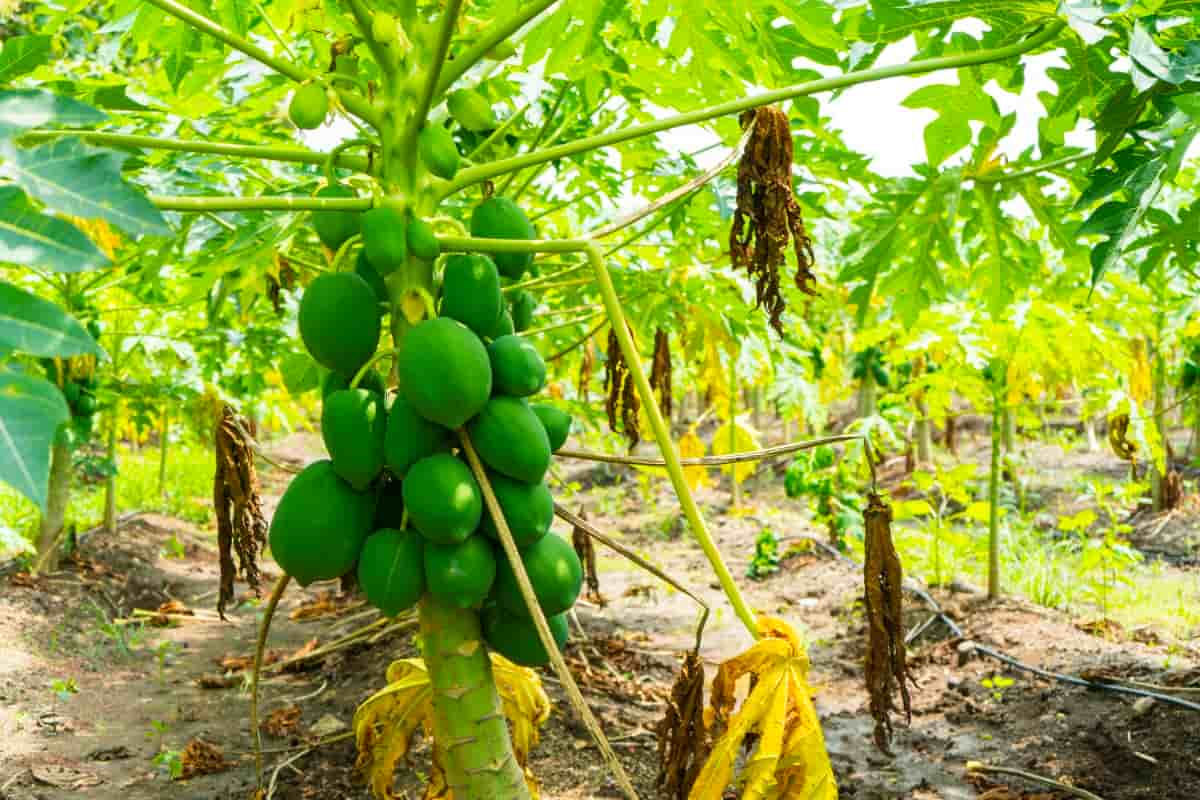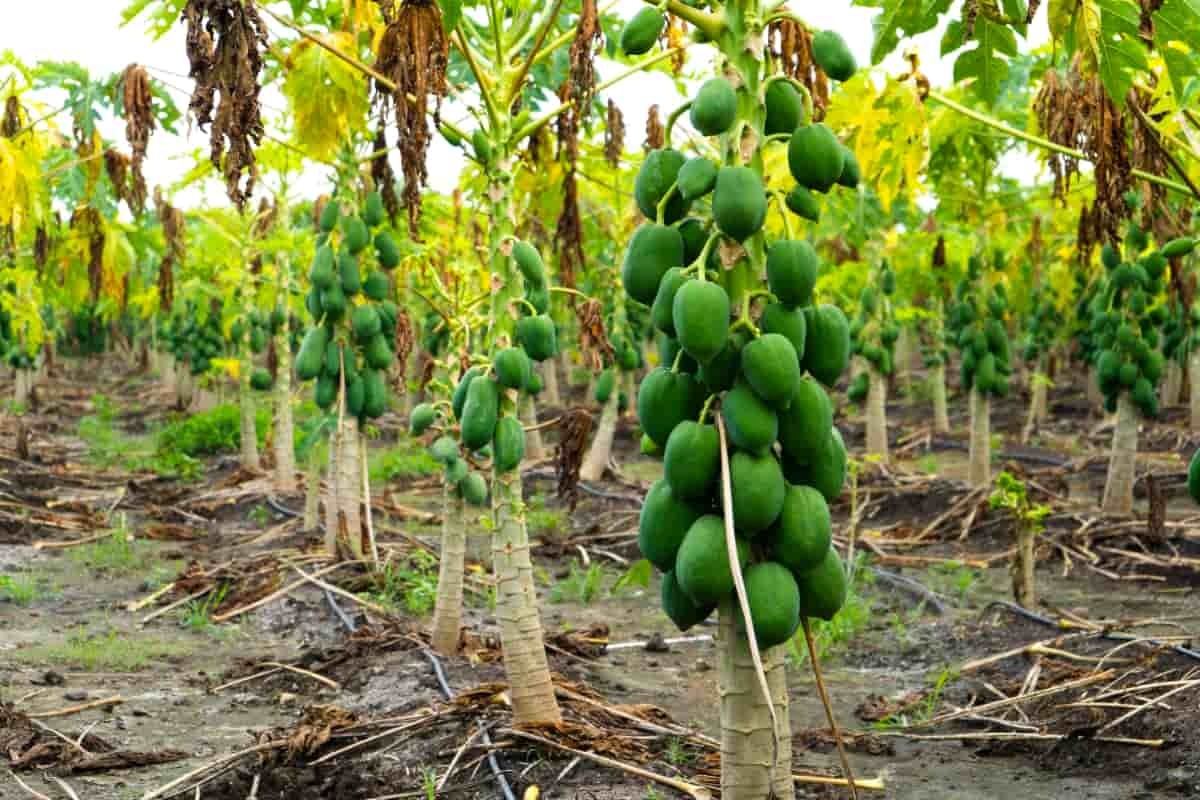Struggling with viral diseases in your papaya plants? Explore effective treatment options to combat these issues. From organic and natural remedies to chemical treatments and homemade solutions, there are various approaches available. Learn to identify symptoms, prevent infections, and enhance disease resistance through integrated pest management and sustainable farming practices.

Stay ahead with the latest biotechnological advances and diagnostic tools to ensure the health and vitality of your papaya crop. Protect your investment and optimize yield with comprehensive strategies for managing viral diseases in papaya.
How to Treat Viral Diseases in Papaya
Papaya tropical fruit crop that is rich in vitamins, minerals, and enzymes. It is widely cultivated in India and other countries for its fresh and processed products. However, papaya production is threatened by viral diseases that can cause losses in yield and quality. Some of the common viral diseases that affect papaya are papaya ring spot virus (PRSV), papaya leaf curl virus (PLCV), papaya mosaic virus (PMV) and papaya bunchy top virus (PBTV).
Aphids, whiteflies, thrips, or through mechanical means, transmit these viruses. They cause symptoms such as mosaic, mottling, distortion, curling, ringspots, bumps, necrosis, and stunting on the leaves, stems, and fruits of papaya plants. Viral diseases can also reduce the shelf life and marketability of papaya fruits.
Overview of Common Viral Diseases
Papaya plants are susceptible to various viral diseases, including PRSV, PLCV, PMV, and PBTV. PRSV, caused by a potyvirus, causes mosaic patterns on the leaf lamina, wet-oily streaks on petioles and tree trunks, and distortion of young leaves. PLCV infects young plants, causing curling, thickening, yellowing, and enation of leaves upward.
Fruits become small, deformed, and drop prematurely. PMV infects plants at any growth stage, causing light green to yellow mosaic patterns on leaves, distorted and wrinkled. PBTV, a nanovirus, infects plants during the rainy season, causing stunting, bunching, curling, and yellowing of leaves. These diseases lead to small, malformed, and tasteless fruits.
Symptoms and Early Detection
Symptoms of viral diseases in papaya are detected through various symptoms, including mosaic, mottling, distortion, ringspot, bumps, necrosis, and stunting. These symptoms can help in early detection by examining the leaves or fruits for any abnormalities. Symptoms can include irregular patches of light green or yellow color, blotches or spots of different shades, twisting, curling, crinkling, deformation, or ringspot.
To detect viral diseases, regular observation of the plants is crucial, and diagnostic tools like ELISA, PCR, or RT-PCR can be used to confirm the presence of specific viruses in plant samples. Regular observation and use of these tools can help in the early detection and management of viral diseases in papaya.
Organic Control Measures
Organic control measures for Papaya viral disease treatment involve the use of synthetic chemicals or genetically modified organisms to manage viral diseases in papaya.
Enhancing Plant Immunity: This involves improving soil health and nutrient management by using organic manures, composts, biofertilizers, and mulches. This can enhance the plant’s ability to resist or tolerate viral infections.
Beneficial Insects and Biological Control: This involves introducing predatory and parasitic species such as ladybugs, lacewings, hoverflies, parasitic wasps, and fungi that can feed on or infect the vectors of viral diseases such as aphids, whiteflies, and thrips.
Natural Remedies for Viral Management: This involves using botanical extracts and their applications, such as neem oil and garlic spray recipes, that can repel or kill the vectors of viral diseases or inhibit viral replication in the plant tissues.
Barrier Methods and Physical Removal: This involves using reflective mulches and row covers that can prevent the vectors of viral diseases from landing on or accessing the papaya plants. It also involves removing and destroying the infected plant parts or whole plants to prevent the spread of viral diseases.
In case you missed it: How to Manage Pest and Diseases in Papaya: Symptoms, Treatment, Control, and Prevention

Chemical Control Strategies
Chemical control strategies for papaya diseases involve synthetic chemicals or genetically modified organisms. Safe use of virucides, such as ribavirin, acyclovir, azidothymidine, and fetal-aluminum, can kill or inhibit viruses but should be used cautiously due to potential adverse effects on human health, environment, non-target organisms. Integrated Pest Management (IPM) combines chemical and non-chemical approaches to control vectors and viruses, reducing pesticide reliance and enhancing natural enemies and plant resistance.
Homemade Solutions for Disease Prevention
Homemade solutions to Manage viral diseases in papaya or reduce viral diseases in papaya can be prepared using locally available materials. These solutions include DIY organic sprays made from cow urine, neem oil, garlic, ginger, turmeric, chili, soap, and water. Crop rotation and companion planting, such as planting legumes, cereals, or marigolds before or after papaya, can break the cycle of viral diseases or attract or repel vectors.
Cultural practices, such as sanitation, weed control, proper irrigation, quarantine, identification, isolation procedures, safe disposal methods, monitoring, early warning systems, traps, monitoring tools, record keeping, analysis, enhancing genetic resistance, selecting resistant varieties, and genetic engineering and breeding techniques, can also be used to mitigate viral spread.
Common Viral Diseases in Papaya
Papaya ring spot virus (PRSV): This virus causes mosaic patterns, ring spots, distortion, and deformation of leaves, stems, and fruits. It can also reduce fruit size and sweetness. Aphids transmit PRSV and can spread rapidly in the field.
Papaya leaf distortion mosaic virus (PLDMV): This virus causes leaf curling, twisting, mottling, and blistering. It can also cause stunting and fruit drop. Whiteflies transmit PLDMV and can infect papaya plants at any stage of growth.
Papaya lethal yellowing virus (PLYV): This virus causes yellowing, wilting, and necrosis of leaves, stems, and fruits. It can also cause premature fruit ripening and decay. Planthoppers transmit PLYV and can kill papaya plants within a few weeks of infection.
Papaya mosaic virus (PapMV): This virus causes mosaic patterns, chlorosis, and necrosis of leaves. It can also cause stunting, fruit deformation, and reduced fruit quality. PapMV is transmitted by mechanical contact and can survive in plant debris.
Papaya meleira virus (PMeV): This virus causes sticky exudation, softening and rotting of fruits. It can also cause reduced fruit size and weight. Insects transmit PMeV and can infect papaya fruits at any stage of development.
Quarantine and Removal of Infected Plants
Infected plants should be identified and removed as soon as possible to prevent further spread of the virus. Infected plant parts should be burned or buried deep in the soil to avoid contact with healthy plants.
Identification and Isolation Procedures
Papaya plants should be inspected regularly for symptoms of viral diseases. Suspected plants should be isolated from healthy plants, tested for the presence of the virus by serological or molecular methods. Papaya fields should be monitored for the presence of insect vectors that transmit viral diseases. Sticky traps, yellow pans, pheromone traps, and monitoring tools can be used to trap and identify the insects. Early warning systems such as weather forecasts, pest alerts, and disease reports can help papaya growers take timely action against viral outbreaks.
Use of Traps and Monitoring Tools
Traps and monitoring tools can help papaya growers reduce the population of insect vectors that transmit viral diseases. Sticky traps, yellow pans, pheromone traps, and monitoring tools can be used to trap and identify the insects. These traps should be placed near the papaya plants and checked regularly for trapped insects.
In case you missed it: Papaya Ringspot Management: Symptoms, Disease Cycle, and Treatment

Record Keeping and Analysis
Papaya growers should keep records of the occurrence and severity of viral diseases in their fields. They should also record the type and amount of insecticides, fungicides, fertilizers, and other inputs used in their fields. These records can help them to analyze the effectiveness of their management practices and make necessary adjustments.
Enhancing Genetic Resistance
Papaya growers should select resistant or tolerant varieties of papaya that can withstand viral infections. Genetic engineering and breeding techniques can be used to develop new varieties of papaya that have improved resistance to viral diseases. Some examples of resistant varieties are SunUp, Rainbow, UH Sunrise, and UH SunUp. These varieties have been genetically modified to resist the Papaya ringspot virus (PRSV), which is one of the most devastating viruses affecting papaya production worldwide.
In case you missed it: Natural Remedies for Managing Viral Plant Diseases

Conclusion
Managing viral diseases in papaya requires a multifaceted approach. By integrating organic, natural, chemical, and homemade control methods, growers can effectively combat viral infections. Implementing sustainable farming practices and enhancing genetic resistance is essential for preserving papaya health and ensuring long-term productivity.
- Beneficial Insects in Pest Management
- Natural Solutions for Pest Control in Flower Gardens
- Types of Fungicides Used in Agriculture
- Common Issues in the Fruit Development Stage of Pomegranate Farming
- Fruit Development Issues in Papaya: Easy Solutions and Treatment
- Soil-Borne Diseases and How to Protect Your Plants
- Practices to Prevent Disease Spread in the Garden
- From Wilted to Thriving: How to Treat Root Rot Naturally in Houseplants
- Natural Remedies to Cure Brown Spots on Fig Tree Leaves